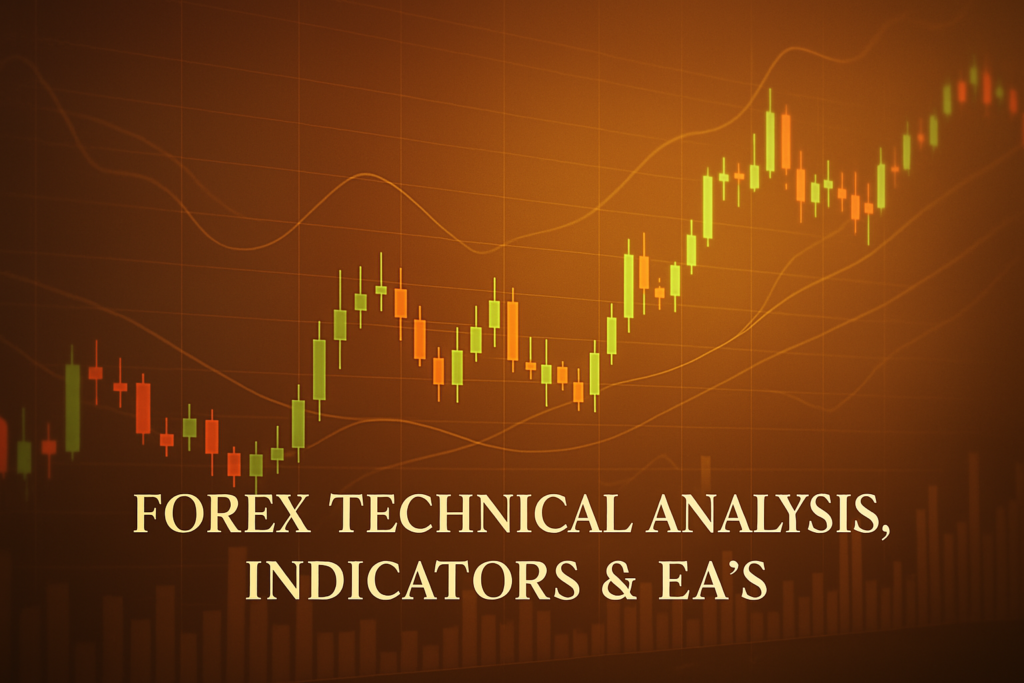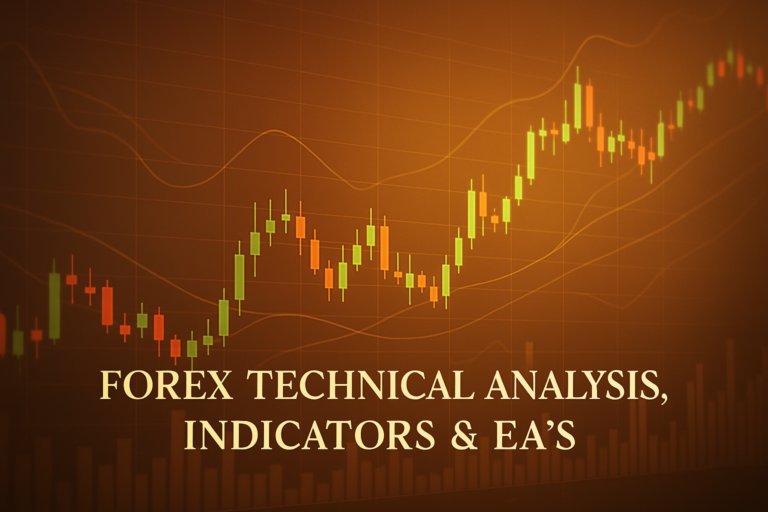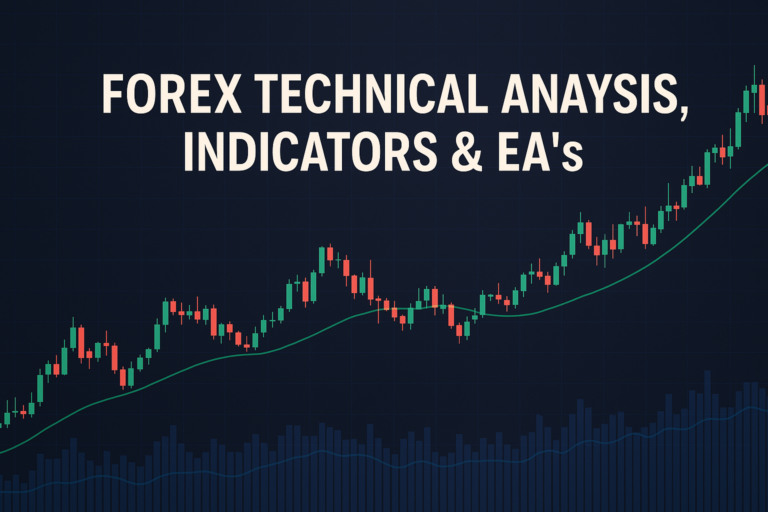
MACD (Moving Average Convergence Divergence) is a key indicator in Forex trading, helping traders identify trends and make informed decisions.
The MACD (Moving Average Convergence Divergence) is a powerful tool that many traders use in Forex trading. It helps to identify potential market trends and reversals. Think of it as a guiding light in the often turbulent waters of trading. By understanding the MACD, traders can make better decisions and potentially increase their profits.
However, grasping the concept of MACD can be challenging. Many beginners feel overwhelmed by technical jargon, while even seasoned professionals sometimes overlook its nuances. This struggle can lead to missed opportunities or, worse, costly mistakes.
That’s why it’s essential to learn and apply MACD correctly. Knowing how to use it can significantly benefit your trading strategy, helping you navigate the Forex market with confidence and clarity.
This article will guide you through the world of MACD, explaining what it is, its history, advantages, disadvantages, and practical applications in trading. We’ll also discuss how to avoid common pitfalls like sudden price jumps leading to massive losses.
What is a MACD (Moving Average Convergence Divergence)?
The MACD (Moving Average Convergence Divergence) is a popular indicator in Forex trading. In simple terms, it helps traders see changes in momentum. Imagine riding a bike downhill; you feel the speed increase. The MACD shows similar speed changes in market prices.
Types of MACD (Moving Average Convergence Divergence)
There are several types of MACD. The most common types include:
- Simple MACD: This type uses simple moving averages to calculate the MACD line.
- Exponential MACD: This type uses exponential moving averages, giving more weight to recent prices.
- Weighted MACD: This type applies different weights to prices over a certain period.
How MACD (Moving Average Convergence Divergence) Smooths Out Price Action
The MACD smooths out price action by averaging price data over time. This helps traders see the bigger picture rather than getting caught up in the noise of daily price fluctuations. It’s like looking at a long road instead of every bump along the way.
Common Periods Used and Why
Traders often use specific time periods with the MACD. Common periods include 12, 26, and 9. The 12 and 26 periods correspond to the short and long-term moving averages, while 9 is used for the signal line. This combination helps traders identify trends and potential reversals more effectively.
The History of MACD (Moving Average Convergence Divergence): How It Became Popular
Origin of MACD (Moving Average Convergence Divergence)
The MACD was created by Gerald Appel in the late 1970s. He designed it to help traders identify changes in momentum. The idea was to provide a clearer view of price movements, making it easier for traders to make informed decisions.
When Did Traders Start Using It Widely?
Traders began using the MACD widely in the 1980s as it gained popularity in trading circles. Its ability to highlight trends made it a favorite among both novice and experienced traders.
Real-Life Stories
Many professional traders have shared stories about how they made significant profits using the MACD. For instance, a trader might have spotted a bullish crossover using the MACD and decided to buy. This decision led to substantial gains as the market moved in their favor.
Advantages and Disadvantages of MACD (Moving Average Convergence Divergence)
Advantages:
The MACD offers several advantages for traders:
- Helps Identify Trends Easily: The MACD makes it simple to spot whether a market is trending up or down.
- Useful for Dynamic Support and Resistance: It can help identify areas where prices may bounce or reverse.
- Works Well for Crossover Strategies: Traders can use crossovers to signal potential buy or sell opportunities.
Disadvantages:
However, the MACD is not without its downsides:
- lags behind price movements: Sometimes, the MACD reacts late, missing early entry points.
- Can Give False Signals in Sideways Markets: In a ranging market, the MACD can produce misleading signals.
How to Apply MACD (Moving Average Convergence Divergence) on MT4 & MT5
Step-by-step Guide to Adding MACD (Moving Average Convergence Divergence) on Charts
To add the MACD to your charts in MT4 or MT5, follow these steps:
- Open your trading platform.
- Select the chart you want to analyze.
- Click on “Insert,” then choose “Indicators” and select “Trend.” Finally, click on “MACD.”
Customizing MACD (Moving Average Convergence Divergence) Settings
You can customize MACD settings for a better fit. Adjust the periods, colors, and types according to your trading style. This personalization helps you spot trends that align with your strategy.
Saving Templates for Easy Application
Once you have customized the MACD, save your template. This way, you can apply it to future charts quickly, making your analysis smoother and more efficient.
5 to 7 Trading Strategies Using Only MACD (Moving Average Convergence Divergence)
Here are some effective trading strategies using only the MACD:
1. All Time Frame Strategy M5 to D1
This strategy works across multiple time frames, offering flexibility. Look for crossovers on the MACD line to signal potential trades.
2. Trending Strategies
When the MACD shows a strong trend, follow it! Buy when the MACD crosses above the signal line and sell when it crosses below.
3. Counter Trade Strategies
In a strong market, some traders choose to counter-trade. Use the MACD to spot overbought or oversold conditions for potential reversals.
4. Swing Trades Strategies
For swing trading, wait for the MACD to signal a momentum shift. When the MACD crosses, it may indicate a good entry point for a swing trade.
5 to 7 Trading Strategies Combining MACD (Moving Average Convergence Divergence) with Other Indicators
Combining MACD with other indicators can enhance your trading strategy:
1. All Time Frame Strategy M5 to D1
Combine MACD with RSI for better accuracy. Look for confirmation from both indicators before placing a trade.
2. Trending Strategies
Use MACD along with moving averages. When the MACD aligns with the moving average direction, it strengthens the trade signal.
3. Counter Trade Strategies
Pair MACD with Bollinger Bands. When the price touches the bands, check for MACD signals to verify potential reversals.
4. Swing Trades Strategies
Use MACD with Fibonacci retracement levels. This combination can help identify strong entry and exit points in swing trades.
Speaking of analysis, check out this AUDUSD analysis april-11-2025 for insights into current market trends.
Top 10 FAQs About MACD (Moving Average Convergence Divergence)
1. What does MACD stand for?
MACD stands for Moving Average Convergence Divergence, a tool used to identify momentum changes in the market.
2. How do I interpret MACD?
Look for the crossover points. When the MACD line crosses above the signal line, it’s a potential buy signal; below indicates a sell.
3. Is MACD suitable for all markets?
Yes, MACD can be applied to Forex, stocks, and commodities, making it versatile for various trading styles.
4. Can MACD produce false signals?
Yes, especially in sideways markets. It’s essential to use MACD alongside other indicators for confirmation.
5. What is a good MACD setting?
Common settings are 12, 26, and 9, but traders may customize these based on their strategies.
6. How often should I check the MACD?
Check it regularly, especially before entering a trade. Adjust your analysis based on the time frame you’re trading.
7. Can beginners use MACD?
Absolutely! It’s a great tool for beginners to learn about market trends and momentum.
8. What is a MACD histogram?
The MACD histogram shows the difference between the MACD line and the signal line. It helps visualize momentum changes.
9. How does MACD help in trend analysis?
MACD helps identify trends by showing bullish or bearish momentum through crossovers and histogram changes.
10. Should I rely solely on MACD?
While MACD is helpful, it’s best to use it in conjunction with other indicators for more reliable results.
Conclusion
In summary, understanding the MACD (Moving Average Convergence Divergence) can greatly enhance your Forex trading experience. By recognizing trends and momentum shifts, you can make more informed decisions. Remember, practice makes perfect. Always test your strategies before risking real money.
As you explore the world of Forex, don’t hesitate to dive deeper into MACD. The more you learn, the better trader you’ll become!
Sharpen your forex approach with additional expert advice from OANDA, Trading Economics
Expand Your Knowledge
- 📌 Forex Trading Learning Road Map
- 📌 Forex Trading Course with no Fees
- 📌 Forex Trading Issues, Problems, and Solutions
- 📌 Forex Daily Forecast & Live Updates
- 📌 Forex Fundamental & News Analysis: Tomorrow’s Market Movers & Trade Opportunities
- 📌 Forex Education Hub: Learn & Profit
- 📌 Forex Technical Analysis, Indicators & EA’s
Start Trading Today
Ready to take your forex trading to the next level? Open an account with Exness, one of the most trusted platforms in the industry. 👉 Sign Up Now and start trading with confidence!
Exness stands out with ultra-low spreads for mini traders, instant withdrawals, and zero spread accounts for pro traders. Trusted since 2008, Exness offers lightning-fast execution, no hidden fees, and a secure, transparent trading environment—giving you the edge you need to succeed. 🚀 Join now and trade smarter!
Watch this helpful video to better understand MACD (Moving Average Convergence Divergence):
Note: The video above is embedded from YouTube and is the property of its original creator. We do not own or take responsibility for the content or opinions expressed in the video.
In the video, the presenter shares a highly effective MACD trading strategy that boasts a high win rate and is easy to implement across various markets. The MACD, short for Moving Average Convergence Divergence, is a popular technical indicator that helps traders identify market trends using moving averages. The presenter emphasizes that, while the MACD can be useful on its own, its performance can be significantly enhanced when paired with other indicators. The MACD consists of four main components: the MACD line, the signal line, the histogram, and the zero line. Understanding how these components interact is crucial for traders looking to capitalize on market movements. Specifically, the strategy involves entering trades when the MACD line crosses above the signal line while being below the zero line for long positions, or vice versa for short positions.
To improve trading accuracy, the presenter recommends incorporating a 200-day moving average into the strategy. This helps determine the overall trend of the market: if the price is above the moving average, the market is in an uptrend; if it’s below, the market is in a downtrend. The presenter advises traders to only enter long positions when the MACD lines cross upward below the zero line and the price is above the 200-day moving average, while short positions should be taken in the opposite scenario. Additionally, the integration of price action analysis, particularly identifying key support and resistance levels, further enhances the strategy. By waiting for the price to hit these levels and confirming with the MACD indicator, traders can increase their chances of success. This comprehensive approach combines technical indicators with market analysis to create a powerful trading strategy that can yield significant profits.
If you’re looking to deepen your understanding of trading, you might want to explore a forex tutorial. Such a guide can provide essential insights and techniques for both novice and experienced traders. Whether you want to learn the basics or refine your strategy, a well-structured tutorial can be an invaluable resource in your trading journey.



